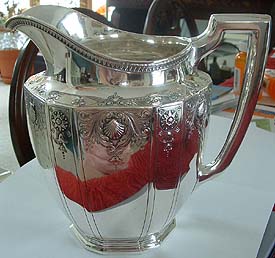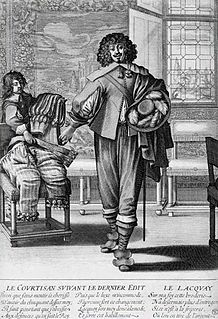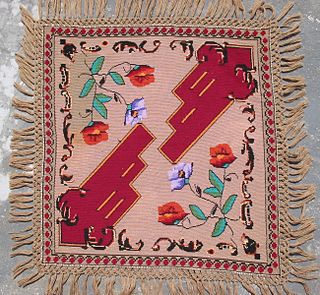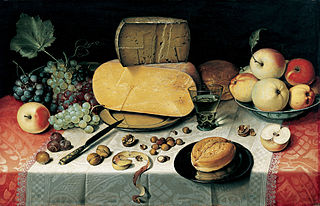
Household silver or silverware (the silver, the plate, or silver service) includes tableware, cutlery, and other household items made of sterling silver, silver gilt, Britannia silver, or Sheffield plate silver. Silver is sometimes bought in sets or combined to form sets, such as a set of silver candlesticks or a silver tea set.

Tableware are the dishes or dishware used for setting a table, serving food and dining. It includes cutlery, glassware, serving dishes and other useful items for practical as well as decorative purposes. The quality, nature, variety and number of objects varies according to culture, religion, number of diners, cuisine and occasion. For example, Middle Eastern, Indian or Polynesian food culture and cuisine sometimes limits tableware to serving dishes, using bread or leaves as individual plates. Special occasions are usually reflected in higher quality tableware.

Cutlery includes any hand implement used in preparing, serving, and especially eating food in Western culture. A person who makes or sells cutlery is called a cutler. The city of Sheffield in England has been famous for the production of cutlery since the 17th century and a train – the Master Cutler – running from Sheffield to London was named after the industry. Bringing affordable cutlery to the masses, stainless steel was developed in Sheffield in the early 20th century.

Sterling silver is an alloy of silver containing 92.5% by weight of silver and 7.5% by weight of other metals, usually copper. The sterling silver standard has a minimum millesimal fineness of 925.
Contents
Historically, silverware was divided into table silver, for eating, and dressing silver for bedrooms and dressing rooms. The grandest form of the latter was the toilet service, typically of 10-30 pieces, often silver-gilt, which was especially a feature of the period from 1650 to about 1780.

A toilet service is a set of objects for use at the dressing table. The term is usually reserved for large luxury sets from the 17th to 19th centuries, with "toilet set" used for later or simpler sets. Historically, services were made in metal, ceramics, and other materials, for both men and women, though male versions were generally much smaller. The rich had services in gold, silver, or silver-gilt. The contents vary, but typically include a mirror, one or more small ewers and basins, two candlesticks, and an assortment of bowls, boxes, caskets, and other containers. One or more brushes and a pin-cushion, often as a top to a box, are often included. The sets usually came with a custom-made travelling case, and some services were especially designed for travelling.

Silver-gilt or gilded/gilt silver, sometimes known in American English by the French term vermeil, is silver which has been gilded with gold. Most large objects made in goldsmithing that appear to be gold are actually silver-gilt; for example most sporting trophies and many crown jewels are silver-gilt objects. Apart from the raw materials being much less expensive to acquire than solid gold of any karat, large silver-gilt objects are also noticeably lighter if lifted, as well as more durable. For objects that have intricate detail like monstrances, gilding greatly reduces the need for cleaning and polishing, and so reduces the risk of damage. Ungilded silver would suffer oxidation and need frequent polishing; gold does not oxidize at all. The "gold" threads used in embroidered goldwork are normally also silver-gilt.

































